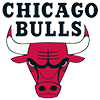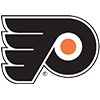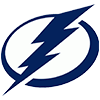Time to step out of character a little and set the record straight. Not usually controversial, I may ruffle some feathers with thoughts on mock drafts and average draft position (ADP). Don't worry, I'll conclude with my approach to both mocks and ADP.
Money Isn't Everything
There's a lot of chatter, both within the industry and from our audience, that mock drafts, actual league drafts, and ADP are worthless unless based on money leagues. Phooey. There are a lot of limitations to using mock drafts and ADP in your preparation. However, to categorically dismiss the utility of a draft or ADP because money isn't involved is myopic.
I can hear some saying, "But doesn't it add a little validity to a draft if money is on the line?". No, not in my not so humble opinion. So long as the participants draft with integrity, picks would be the same, regardless. Sure, there's a contingent trying different things in a mock, but that doesn't invalidate the results. In fact, it legitimizes them. Want proof? Head over to the National Fantasy Baseball Championship (NFBC) forums and check out the results of their money leagues. You'll see all sorts of roster construction. Encountering a team starting with four pitchers, double-punching shortstop on the turn, taking a ton of steals early etc., during a mock prepares you for it happening in your own league. Seeing how others deal with (or mishandle) the challenge aids in your own prep. Trust me, those participating in next
Time to step out of character a little and set the record straight. Not usually controversial, I may ruffle some feathers with thoughts on mock drafts and average draft position (ADP). Don't worry, I'll conclude with my approach to both mocks and ADP.
Money Isn't Everything
There's a lot of chatter, both within the industry and from our audience, that mock drafts, actual league drafts, and ADP are worthless unless based on money leagues. Phooey. There are a lot of limitations to using mock drafts and ADP in your preparation. However, to categorically dismiss the utility of a draft or ADP because money isn't involved is myopic.
I can hear some saying, "But doesn't it add a little validity to a draft if money is on the line?". No, not in my not so humble opinion. So long as the participants draft with integrity, picks would be the same, regardless. Sure, there's a contingent trying different things in a mock, but that doesn't invalidate the results. In fact, it legitimizes them. Want proof? Head over to the National Fantasy Baseball Championship (NFBC) forums and check out the results of their money leagues. You'll see all sorts of roster construction. Encountering a team starting with four pitchers, double-punching shortstop on the turn, taking a ton of steals early etc., during a mock prepares you for it happening in your own league. Seeing how others deal with (or mishandle) the challenge aids in your own prep. Trust me, those participating in next week's Mixed LABR draft want to win, despite the fact only bragging rights are on the line, and no one will be padding their bank account.
Those in the industry preaching that non-money drafts or leagues are useless are jealous of those privileged to play in some of the showcase leagues or just want to drop a hot take, feeling this somehow increases their credibility and standing within the industry. Non-industry members that espouse this notion are almost always high-stakes players, envious of those that work hard and get paid for fantasy sports advice and analysis. There's my own hot take.
NFBC ADP
I understand marketing, so I completely get why the NFBC pushes its ADP as the industry standard. Web sites, including my private site, include the NFBC ADP in their content. We talk about it on the Rotowire podcasts as well as on SiriusXM.
But here's the deal. The NFBC ADP is not the be-all-end-all. I'm not talking about the general use of ADP in draft strategy, more on that in a minute. I'm referring to the contention that because the NFBC ADP is derived from real leagues, with an entry fee, it's more credible.
The NFBC ADP represents the market value of players for NFBC drafts. Further, that ADP is only germane to leagues of that exact format, presently the NFBC Draft Champions or Cutline. These contests have unique rules, with strategies designed specifically for each contest.
In addition, NFBC players draft differently than the typical home league. Pitching is pushed up the NFBC draft board, turning most drafts into a monkey-see, monkey do scenario. There's a fascination with young, unproven players like Trea Turner, elevating their ADP. Again, this is great information if you're playing in an NFBC league. But comparing the draft spot of a player taken in the recent Fantasy Sports Trade Association league or next week's Mixed LABR draft with the NFBC ADP is comparing apples to oranges. OK, the difference may not be that drastic, but there is context you must consider.
Analyzing Mock or League Drafts
Let's put the soapbox away and focus on some tangible advice to get you ready for 2017. A phrase you'll see or hear a lot from me in the coming weeks is "relative, not absolute." That mainly pertains to player valuation, but it is also part and parcel with draft analysis. Ignore the actual spots players are taken, or land in an ADP list. Instead, look for similar players and compare them relative to each other in your rankings. Identify the players with a discrepancy, and spend some time reevaluating. Perhaps you'll confirm your initial finding, or maybe the deep dive unearths a latent weakness and a change in rank. Again, don't worry about where the player goes in the LABR mixed draft or is on the NFBC ADP. What matters is where they sit relative to similar players in your personal ranking.
Participating in Mock Drafts
Sorry, one more mini-rant. Those suggesting doing mocks are worthless since the same thing won't happen when it counts don't get it. Sure, they're right about that, but that's not the point. Back to advice mode.
Some like to do mocks since it allows trying different strategies. This is all well and good, except you really don't know if the plan worked since the leagues isn't played out. Even if it were played out and you end up winning, it may not be a result of the strategy. Usually, it's more about who you picked than why you picked them. Regardless of the strategy, we all gravitate towards players we favor compared to the market. So long as a bunch of those players are on our team, we'll deem the strategy successful.
This segues into my favorite ploy in a mock. Early on, do a few mocks to try and put together the best team using your rankings. Try different starting points and alter strategy. Chances are, you'll witness a cross-section of common players. You'll be most comfortable with a particular strategy. You'll like drafting from the middle or either wheel.
Now it's time to change things up. Avoid the players most often populating your roster. If you prefer taking two ace arms early, take only one, or even none. Put yourself in uncharted territory.
Ideally, you'll deploy the strategy you deem optimal, taking the players you feel will be the most productive. However, sometimes things don't work out as planned. You get sniped or the draft flow renders your strategy less likely to succeed. Avoiding players you favor in mocks forces you to do research on players off your radar. Having navigated a few unfamiliar courses during mocks eases the process when it counts. With mocks, it's not so much practice makes perfect as it is practice yields comfort.
Using an ADP
The assumption here is you're using an ADP apropos to your league. The format is similar, if not the same, as is the mindset of the drafters. The results are current, accounting for recent news that altered a player's expected production. Presumably, you've already found the discrepancies from your own ranks and reevaluated those players.
There are two primary ways to use ADP. One of pre-draft, while the other is during the proceedings.
Before the draft, use the ADP to identify players where your ranking differs significantly from the market. Ideally, there's a group of such players, sharing a trait such as position or statistical contribution. As an example, there's a set of second baseman I like more than the current NFBC ADP. These include Logan Forsythe, Jonathan Schoop and Cesar Hernandez. As such, I'm fading second base early. I'll pass on Robinson Cano and Brian Dozier, opting for another position, likely shortstop since I see a sizable drop-off in the mid to late rounds. Another example is being willing to pass on speed early and look for steals late. Even if I start off with heavy power, say Nolan Arenado and Edwin Encarnacion, I won't balance with an early Dee Gordon or Billy Hamilton, instead bagging pilfers here and there before picking from Manuel Margot, Charlie Tilson or Travis Jankowski late. Going through this process before the draft helps put the roadmap in place.
During the draft, the ADP helps order selections. I don't care how the market values a player; I care how I value him. However, I do care where they value him.
I have an expectation for each draft spot. The objective is filling each with a player that meets, or hopefully surpasses, those expectations. Let's say I feel a player is worthy of my ninth-round pick, but the market isn't likely to draft him until the 14th. There are always other players deserving of a ninth round pick. ADP says I can wait on the first guy, maybe pulling the trigger in the 11th or 12th where he yields an even greater return on my investment.
Thus concludes this episode of the Z Files. Thanks for the early indulgence. Hopefully you gleaned something from the discussion.
Oh yeah, wish me luck in the Mixed LABR draft as I defend my 2016 Championship against the likes of Jeff Erickson, Scott Pianowski and 12 other talented competitors, looking to wrest away my title. Hey, I did say we were playing for bragging rights!

























